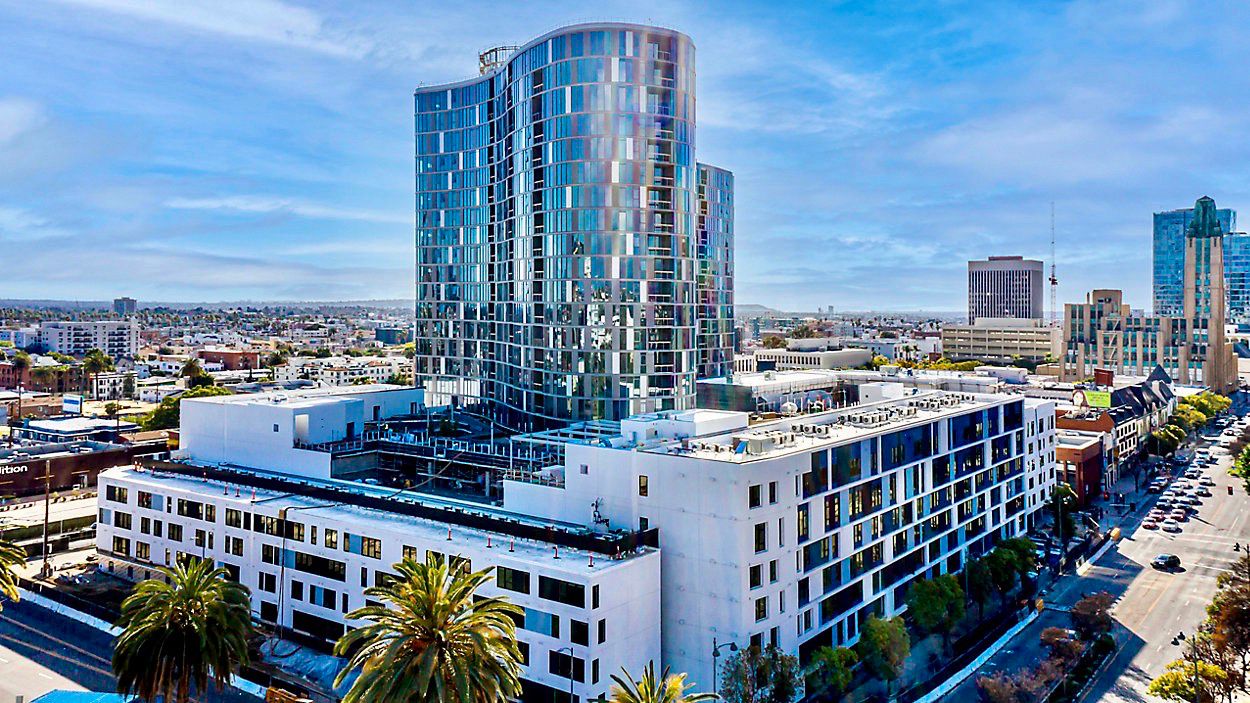ANAHEIM, Calif. — Demand for housing remains hot, as asking rent in Southern California continues to climb.
A new Redfin report revealed that the median asking price of rent in the Los Angeles and Anaheim/Orange County region rose 10% year-over-year in April to nearly $3,400 a month. In Riverside, the asking monthly rent is almost $2,800, an 8% jump from the previous year.
According to Redfin, nationwide rents rose 15% in April year-over-year, a 2% drop from March's 17% increase.
Despite the slight drop, housing remains in hot demand across the U.S. during the coronavirus pandemic, with places like Austin, Portland and South Florida experiencing a rent surge of more than 30% year-over-year, Redfin reported.
The median monthly asking rent in the U.S. was $1,962 in April, a 15% increase from the previous year.
However, asking rents dropped 2% month-to-month, something that Redfin officials say could be the start of a price slowdown as inflation rises.
"The fact that rents are growing at a slower pace may be a very early sign that the Fed's tactic of raising interest rates to quell inflation is working," said Redfin Chief Economist Daryl Fairweather in a news release. "However, rents are still growing at nearly double the rate of overall inflation. Landlords in hot migration destinations like Austin, Portland and South Florida are charging new tenants 30% more than last year's rent."
The new report comes as Los Angeles and many places across Southern California are experiencing a huge demand for apartments to rent.
A combination of being priced out of the single-family housing market, commercial real estate investors buying apartments and companies asking employees to return to the office have many people flocking back to the city as the coronavirus pandemic wanes.
According to the Los Angeles Times, citing commercial real estate data firm CoStar, the apartment vacancy rate in Los Angeles has dropped from 6% in mid-2020 to 3.5%. In Orange County, the vacancy rate is 2.4% after a high of 5.5% in mid-2020. Meanwhile, the Inland Empire sees a 2.6% vacancy rate — the lowest since 1981, the Times reported.
Apartment Association of Greater Los Angeles executive director Daniel Yukelson told Spectrum News to take Redfin's rental report with a grain of salt.
Redfin uses new apartment asking lease data from its sister company RentPath, which owns Rent.com, Rentals.com and ApartmentGuide.com. Redfin said it analyzes over 20,000 apartment buildings in large metros across the U.S.
The data analyzes the median price of apartments available for new renters during the report month.
"Those are asking rents and mostly for high-end properties," Yukelson said. "It's not indicative of all rents, especially here in Los Angeles, where we have rent control."
Yukelson said while most rent reports show year-over-year double-digit percentage rental asking prices, many landlords are still struggling.
"At the beginning of COVID [pandemic], many landlords dropped rent prices 10% to 15% because a lot of people left [the city] and there were huge vacancies," he said.
In the past two years, landlords and multifamily property owners also had to freeze rent and deal with an eviction moratorium. And inflation is not the only reason rent prices are rising.
The labor shortage has increased the cost of services like maintenance. Insurance cost has gone up, Yukelson said, and so have city inspections and trash hauling fees. And the price of business is always high in California.
"There are landlords that incurred substantial losses, and there's no other way for them to recover their costs but to hike rent," he said.
Still, Yukelson said that demand is up, mainly because companies require employees to return to their offices. The apartment vacancy rate has nearly caught up to pre-pandemic levels of 3%.
But, and there's a but, Yukelson said, many of his members at the Apartment Association are waiting for a possible downturn — a recession.
So while things appear good for now, it may be temporary.
"We're all waiting for the next shoe to drop," he said.



